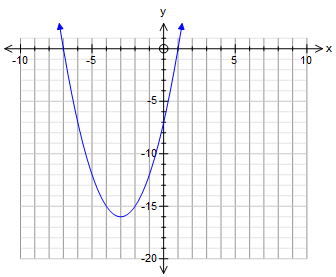How do you use the discriminant to determine the numbers of solutions of the quadratic equation #x^2 + 6x - 7 = 0# and whether the solutions are real or complex?
1 Answer
Feb 5, 2016
see explanantion
Explanation:
Consider the following value for the discriminant: (d)
For your equation of:

The discriminant is:
As these are not complex they are real solutions

